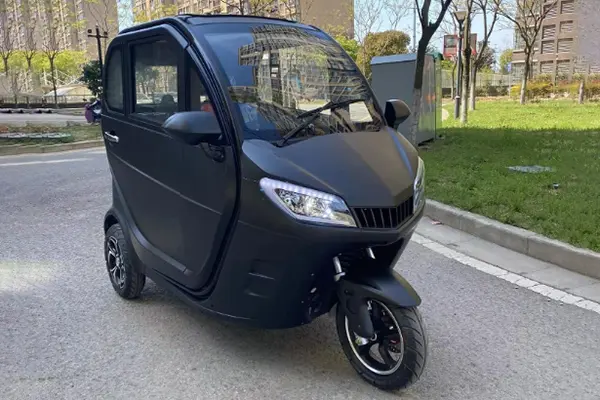A three-wheeler, often referred to as a trike, is a vehicle with three wheels instead of the typical two or four. Three-wheelers come in various forms and serve different purposes, from recreational to practical, and even industrial use. Here’s a look at the main types of three-wheelers, their features, and why they are popular across different sectors.
Types of Three-Wheelers
1. Motorized Three-Wheelers
Motorized three-wheelers include vehicles powered by engines, often used for commuting, cargo, and transport in various regions, especially in countries where compact and affordable transportation is in high demand. There are a few common types:
-
- Auto Rickshaws (Tuk-Tuks): These are popular in many parts of Asia, Africa, and Latin America as affordable and efficient means of public transport. They can navigate narrow streets and crowded areas better than larger vehicles.
- Three-wheeled motorcycles (Trikes): These are often used for leisure and travel by those who prefer the feel of a motorcycle but want the stability of an additional wheel. They’re popular among older riders or those with limited mobility, as they are easier to balance than traditional motorcycles.
- Three-Wheeled Electric Vehicles: With the rise in electric vehicle (EV) technology, electric trikes are gaining popularity. Many models, like cargo electric tricycles, are designed to transport goods, offering an eco-friendly solution for urban delivery services.

2. Non-Motorized Three-Wheelers
Non-motorized trikes are primarily used for recreational or personal transport. These include:
-
- Pedal Tricycles: Traditional pedal-powered trikes are common among children, but adult versions are also popular for short commutes, recreational activities, and those needing a stable ride.
- Recumbent Trikes: These have a unique design where riders sit in a reclined position, making them more comfortable and ergonomic, especially for long-distance rides.
Benefits of Three-Wheelers
Three-wheelers provide distinct advantages compared to two- and four-wheeled vehicles:
- Stability: Three-wheelers are generally more stable than bicycles or motorcycles, making them a safer choice for riders who need extra support, including elderly individuals or those with balance issues.
- Compact and Maneuverable: Compared to cars, three-wheelers can be narrower and smaller, allowing for easier navigation in tight spaces and crowded areas. This makes them especially useful in dense urban settings.
- Fuel Efficiency and Lower Operating Costs: Motorized three-wheelers, especially smaller engine ones like auto rickshaws, often consume less fuel than larger vehicles, reducing operating costs. Electric three-wheelers further lower costs due to reduced fuel consumption and maintenance.
- Cargo Capacity: Cargo electric tricycles and motorized delivery trikes provide a compact and affordable solution for businesses needing to transport goods in urban environments. They offer a balance between carrying capacity and accessibility, often allowed to enter areas that are restricted to larger vehicles.
Applications of Three-Wheelers
Three-wheelers are highly versatile and find applications in various fields:
- Public Transportation: In many countries, auto rickshaws are a mainstay of public transport, providing low-cost rides for short distances and often serving as a solution for “last-mile” connectivity.
- Tourism: Three-wheeled vehicles are often used in tourism to provide guided city tours, especially in places where they can easily access narrow streets and landmarks.
- Delivery and Cargo: Businesses are increasingly adopting cargo trikes, especially electric ones, for local deliveries. They’re ideal for grocery, restaurant, and courier services in cities, reducing emissions and operating costs.
- Recreational Use: Many people use trikes for leisure riding. Models like recumbent trikes or three-wheeled motorcycles cater to those who want an alternative to traditional bikes or motorcycles.
Future of Three-Wheelers
With the push toward sustainability, electric three-wheelers are expected to see significant growth. Countries with high levels of urban density are investing in electric rickshaws and cargo trikes as part of sustainable city planning. Additionally, new designs and innovations are making three-wheelers safer, more comfortable, and more appealing to a wide range of users.
In conclusion, three-wheelers are practical, cost-effective, and versatile vehicles with applications ranging from personal transportation to cargo hauling and tourism. With advancements in electric technology, they’re also becoming an environmentally friendly option, making them an important part of the future of urban mobility and sustainable transport.
Post time: 11-12-2024




